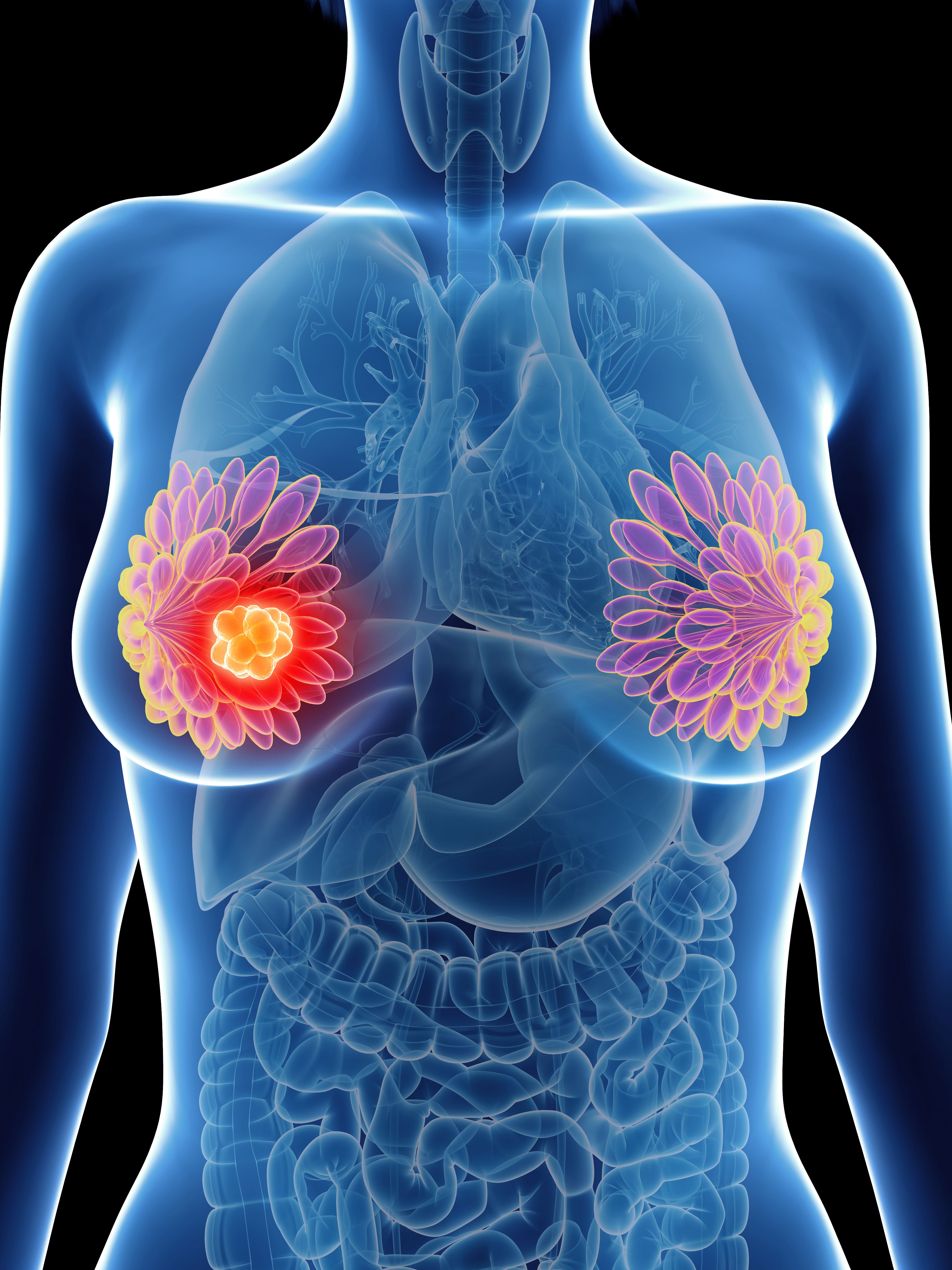Anti-HER2 Therapy and Weekly Paclitaxel Show AMH Decline in HER2+ Breast Cancer
In the biomarker analysis of the phase 3 NeoALTTO study, a small reduction in antimüllerian hormone levels were seen during 2 weeks of anti-HER2 treatment alone followed by a significant decline in most patients with HER2-positive breast cancer after combining with weekly paclitaxel.

Treatment with trastuzumab (Herceptin) or lapatinib (Tykerb) alone led to limited gonadotoxicity in patients with HER2-positive breast cancer, but the addition of weekly paclitaxel showed a marked antimüllerian hormone (AMH) decline as well as potential negative implications for later ovarian function and fertility.
Findings come from the biomarker analysis of the phase 3 NeoALTTO (BIG 1-06) trial (NCT00553358) which was published in the Official Journal of the National Comprehensive Cancer Center. The NeoALTTO biomarker analysis evaluated premenopausal patients with HER2-positive early breast cancer who were not previously exposed to anthracycline/cyclophosphamide-based chemotherapy.
Results from this analysis demonstrate the potential impact of anti-HER2 therapies alone or in combination with weekly paclitaxel on ovarian reserve measured by AMH levels. Additionally, findings note that age and pretreatment ovarian reserve are key determinants of treatment-induced gonadotoxicity risk.
"What we found in this paper was that anti-HER2 therapies do not affect ovarian function but weekly taxol, that previously been considered a reasonably well tolerated chemotherapy, in fact has a significant detrimental impact on ovarian function reserves. These results draw attention to the importance of discussing fertility preservation in young women before starting chemotherapy, regardless of the type of chemotherapy regimen that is planned,” Lajos Pusztai, MD, DPhil, professor of Medicine (Medical Oncology), and co-leader of Genetics, Genomics, and Epigenetics at Yale Cancer Center, told Targeted OncologyTM.
“This biomarker analysis of the NeoALTTO trial explored the short-term impact of anti-HER2 therapy alone and then combined with weekly paclitaxel on ovarian reserve measured by AMH levels in premenopausal women with HER2-positive early breast cancer not previously exposed to anthracycline/cyclophosphamide-based chemotherapy,” wrote study authors.
The multicenter, open-label, randomized, phase 3 NeoALTTO trial evaluated patients with HER2-positive early breast cancer. Patients were given neoadjuvant treatment with anti-HER2 therapy alone (either trastuzumab and/or lapatinib) for 2 cycles for a total of 6 weeks. Then, treatment was given with weekly paclitaxel for 12 cycles prior to surgery. After surgery, patients were administered 3 cycles of 5-fluorouracil, epirubicin, and cyclophosphamide, followed by 34 additional weeks of the same anti-HER2 therapy that was given in the neoadjuvant phase.
In this biomarker analysis of the randomized, phase 3 neoadjuvant NeoALTTO trial, premenopausal women aged 45 years and younger who had a diagnosis of HER2-positive early breast cancer were enrolled. Patients had to have available frozen serum samples at baseline and prior to anticancer treatments, at week 2, and/or at the time of surgery.
The primary end point of this analysis was to evaluate acute gonadotoxicity of anti-HER2 agents as a monotherapy or in combination with taxane-only chemotherapy. This was measured using serum AMH levels. Secondary end points were to assess the impact of the different anti-HER2 agents and of patient age and baseline ovarian reserve on treatment-induced acute gonadotoxicity.
Among those included in the analysis were 130 patients with a median age of 38 years (interquartile ratio [IQR], 33-42 years). A total of 86 (66.2%) patients were aged 40 years and younger, 41 (31.5%) patients were given trastuzumab, 45 (34.6%) were given lapatinib, and 44 (33.9%) were randomized to the trastuzumab plus lapatinib arm, respectively.
AMH values were different at the 3 time points in the trial (P < .001). The median AMH level at baseline was 1.29 ng/mL (IQR, 0.56-2.62 ng/mL). At week 2, there was a small yet significant reduction in AMH levels observed with a median of 1.10 ng/mL (IQR, 0.45-2.09 ng/mL; P < .001). Then at surgery, there was an even larger significant decline in AMH levels with a median of 0.01 ng/mL (IQR, 0.01-0.03 ng/mL; P < .001).
Treatment with either trastuzumab, lapatinib, or both combined did not seem to impact the results. However, age and pretreatment ovarian reserve did have an influence on treatment-induced gonadotoxicity risk.
Overall, the percentages of AMH change at week 2 and at surgery were significantly different compared with baseline (P < .001) as the median cumulative decrease in AMH levels was −12.5% (IQR, −37.6% to 12.4%) at week 2 and −99.9% (IQR, −100.0% to −98.7%) at surgery. Then, the median cumulative decrease in AMH levels at the time of surgery was −80.7% (IQR, −109.5% to−54.8%).
The median AMH levels at screening/baseline were 2.76 ng/mL (IQR, 1.40-4.07 ng/mL) for patients younger than 35, 1.33 ng/mL (IQR, 0.95-2.25 ng/mL) for those aged 35-40, and 0.52 ng/mL (IQR, 0.12–1.01 ng/mL) in patients aged 41-45 years, respectively. The AMH levels continued to be significantly different between age groups at all time points (P < .001.
“We observed a small reduction in AMH levels during 2 weeks of anti-HER2 treatment alone and then a profound decline to almost undetectable levels in most patients after its combination with weekly paclitaxel. Although type of anti-HER2 targeted agent did not demonstrate any influence, age and pretreatment ovarian reserve had a major impact on the acute risk of treatment-induced gonadotoxicity. This analysis provides novel important information to share with premenopausal patients with breast cancer to improve their oncofertility counseling,” concluded the study authors.
REFERENCE:
Lambertini M, Ceppi M, Anderson RA, et al. Impact of anti-HER2 therapy alone and with weekly paclitaxel on the ovarian reserve of young women with HER2-positive breast cancer. J Natl Compr Canc Netw. 2023;21(1):33-41.e16. doi:10.6004/jnccn.2022.7065
Durability and Intracranial Efficacy Observed With T-DXd in HER2+ MBC
January 13th 2025During a Case-Based Roundtable® event, Ian Krop, MD, and participants discussed how the outcomes of the DESTINY-Breast03 and other trials impact treatment of metastatic HER2-positive breast cancer in the second article of a 2-part series.
Read More